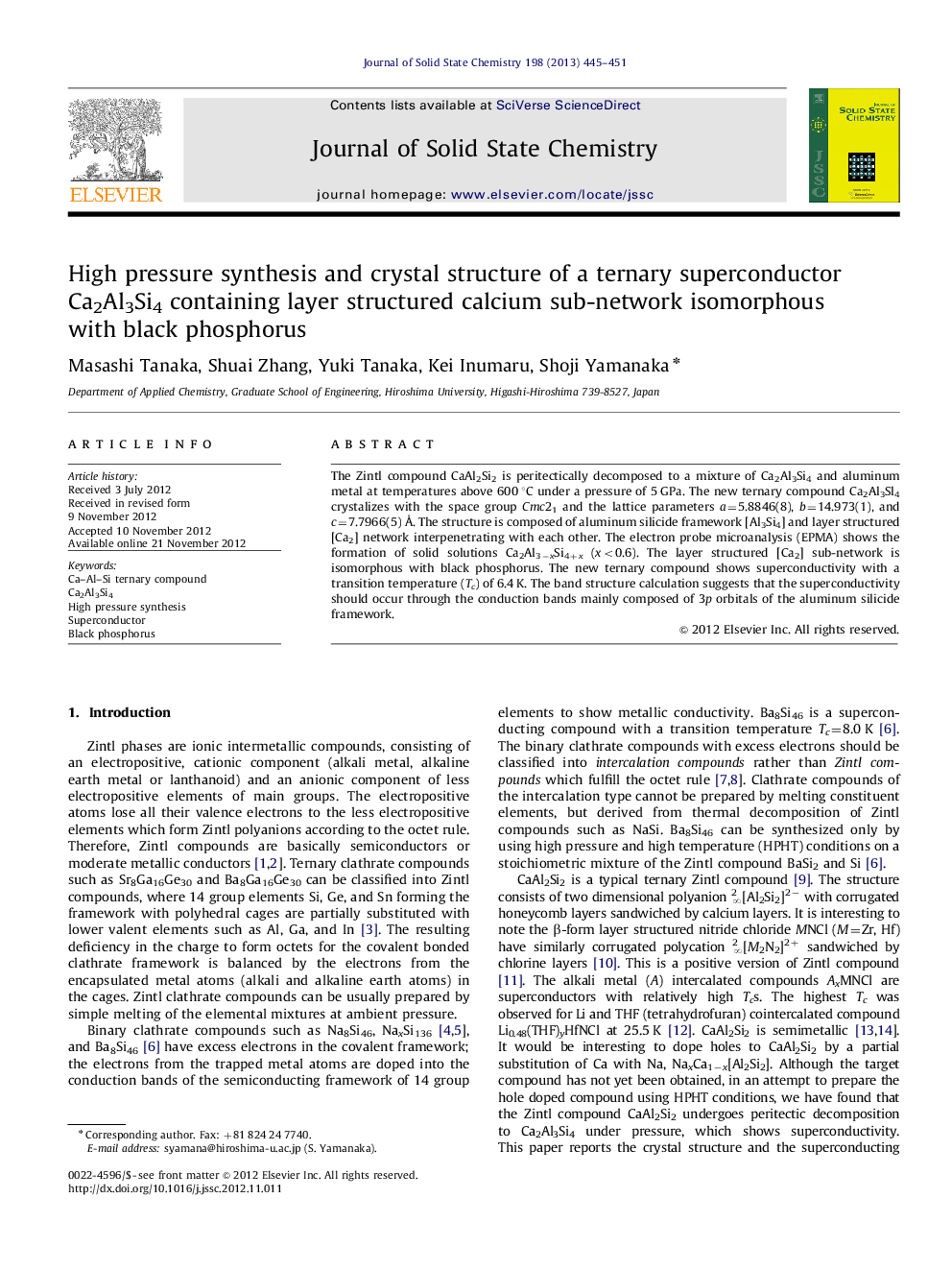| Article ID | Journal | Published Year | Pages | File Type |
|---|---|---|---|---|
| 1331415 | Journal of Solid State Chemistry | 2013 | 7 Pages |
The Zintl compound CaAl2Si2 is peritectically decomposed to a mixture of Ca2Al3Si4 and aluminum metal at temperatures above 600 °C under a pressure of 5 GPa. The new ternary compound Ca2Al3Sl4 crystalizes with the space group Cmc21 and the lattice parameters a=5.8846(8), b=14.973(1), and c=7.7966(5) Å. The structure is composed of aluminum silicide framework [Al3Si4] and layer structured [Ca2] network interpenetrating with each other. The electron probe microanalysis (EPMA) shows the formation of solid solutions Ca2Al3−xSi4+x (x<0.6). The layer structured [Ca2] sub-network is isomorphous with black phosphorus. The new ternary compound shows superconductivity with a transition temperature (Tc) of 6.4 K. The band structure calculation suggests that the superconductivity should occur through the conduction bands mainly composed of 3p orbitals of the aluminum silicide framework.
Graphical abstractA new ternary superconductor Ca2Al3Si4 has been prepared under high pressure and high temperature conditions, which includes layer structured calcium sub-network isomorphous with black phosphorus. Figure optionsDownload full-size imageDownload as PowerPoint slideHighlights► A typical Zintl compound CaAl2Si2 melts congruently at ambient pressure. ► Under high pressure CaAl2Si2 decomposes to Ca2Al3Si4 and Al at ∼600 °C. ► Ca2Al3Si4 contains Ca sub-network isomorphous with black phosphorus. ► Ca2Al3Si4 shows superconductivity with a transition temperature of 6.4 K.
